
Our homes are often the place we spend the most time. Studies have shown that the average person spends about 80% of their day indoors, at home. (Spoiler alert: these home improvement ideas can actually change the health of our space).
While often times we hear how horrible this can be for the health of our bodies, I want to encourage you to change your own thinking about this fact. How great is it that we can actually improve and change the air within our homes to be healthier. With spending 80% of our day in a healthy and low toxin environment, we can actually drastically improve not only the environmental health of our home, but our bodies as well.
Often times we think of DIY projects at home to be creating a feature wall or using spray paint to freshen the look of a piece of furniture. Today, I’m sharing with you some home project ideas that can actually improve the feel and environment within your home. Some of these will add some aesthetic appeal to your home as well, but mostly these are incredibly practical improvements to your home that will improve your indoor air quality (IAQ).
These DIY home projects are simple and easy to take care of in one weekend with the proper planning. The goal for each of these projects is to restore health to your home and reduce indoor air pollutants as much as possible.

Upgrade Bathroom Vent Fans
This is a great way to improve the indoor air quality in your home for a few different reasons. Having a properly functioning bathroom fan is a great way to pull excess moisture out of the air. We know that a home environment with high amounts of moisture can be environments where mold and mildew thrive and where dust mites run rampant.
By improving the amount of moisture and air that’s pulled out of your bathroom, you can improve the quality of air as well. You’ll want to make sure that your vented fan does in fact vent to the exterior of your home and not an indoor space when you complete your installation. And then best practice is to use your vented fan (using it with opened windows is a bonus). Keep as much moisture pushed out of your home as possible.
Clean Your HVAC System & Filter
While this isn’t a glamorous home improvement idea or project by any means, it can really help improve the indoor air quality at home. First you’ll want to make sure that you remove as much dust and debris from the inside of your HVAC unit as possible. You’ll also want to make sure that the flame inside your furnace is burning blue (as opposed to orange or yellow). A blue flame indicates your system is burning clean and reduces the potential of high carbon monoxide levels.
Once you’re looking in your HVAC unit, ensure there is no moisture or water present. If there is, it’s time to call in the professionals to assess proper repairs.
If you’re needing to replace your furnace filters, then I highly recommend you consider changing over to activated charcoal filters as opposed to the standard pleated filters. Activated carbon can actually remove allergens and impurities such as dust, mold, smoke, household chemicals and benzene and VOCs. It traps them within the filter and then you remove them when you replace your filter. Normal filters allow gasses and small particles to pass through the HEPA filter, but charcoal attracts these contaminants and traps them.
While this isn’t necessarily a home improvement project, it will certainly improve the indoor air quality within your home. Below is my top brand picks for Activated Charcoal Filters:
Add Waterproof Coating to Foundation Walls
If you have exposed foundation walls in your basement that are not covered by building materials such as drywall or insulation, it’s a great idea to add a waterproof coating to prevent condensation and moisture from migrating through the concrete into your living spaces.
As we know, excess moisture anywhere in the house is a recipe for disaster. Excess moisture due to any sort of moisture intrusion (leaks, condensation, etc.) not only creates an environment for mold to grow, but it also increases the indoor humidity levels. When indoor humidity levels are higher than 45% or so, we see VOCs and chemicals off gassing at a much higher rate.
Safecoat is my pick for a non-toxic brand you can trust to add a waterproof coating to the foundation walls:
Monitor & Lower Humidity
Monitoring and maintaining the right indoor humidity level is key to better air quality and a healthier home. The ideal range for indoor humidity is between 35% and 40%, as levels above this can promote mold growth and dust mites, while lower levels can cause dryness and irritation.
A simple way to keep track of your humidity is by using a digital hygrometer, an affordable device that gives real-time humidity readings. If your home’s humidity is too high, easy solutions include using exhaust fans in bathrooms and kitchens, running a dehumidifier in damp areas, and ensuring proper ventilation by opening windows when weather permits. Additionally, fixing leaks, reducing the number of houseplants in one space, and avoiding overwatering them can also help regulate moisture levels.
These small adjustments can go a long way in keeping your indoor air fresh and free from excess humidity-related pollutants.
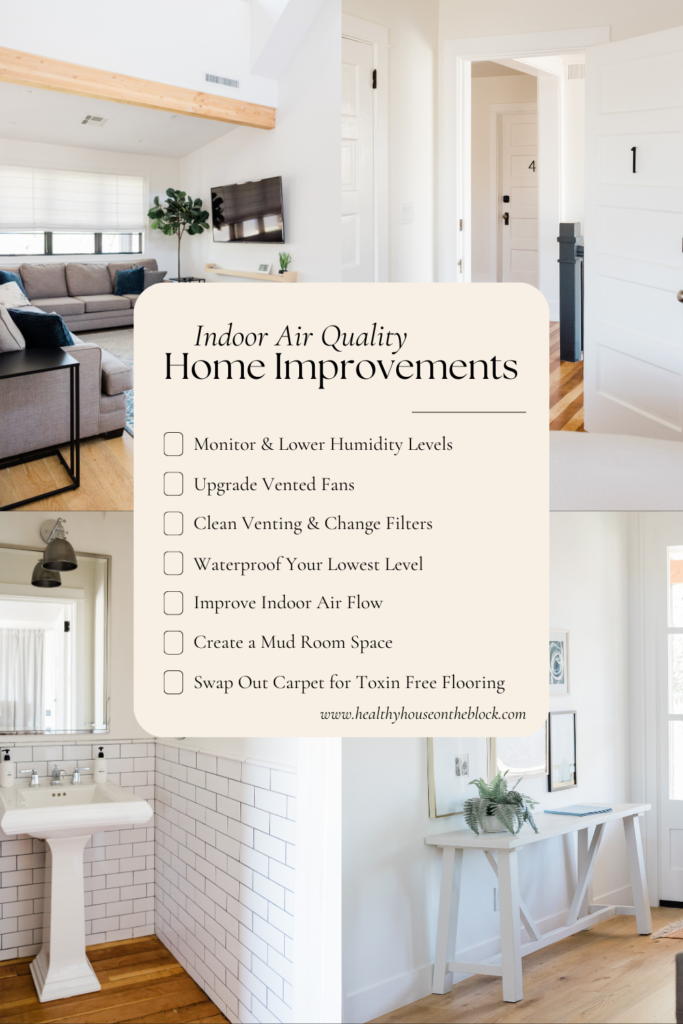
Improve Indoor Air Flow
Proper airflow is essential for maintaining good indoor air quality, and a few simple steps can make a big difference in how fresh and clean your home’s air feels.
Start by ensuring that all air vents are open and unobstructed by furniture, rugs, or curtains so that air can circulate freely. Regularly cleaning vents and registers can also help prevent dust buildup that can restrict airflow. Another crucial step is changing your HVAC filter every 1–3 months, depending on usage and filter type, to keep your system running efficiently and to reduce airborne contaminants. For a deeper clean, consider having your ductwork professionally cleaned every few years to remove dust, debris, and potential mold buildup that could be circulating through your home. By taking these simple measures, you’ll not only improve airflow but also create a healthier indoor environment for you and your family
Keep Up on Moisture Maintenance
Keeping up with moisture maintenance is essential for both indoor air quality and the overall health of your home. Start by routinely inspecting the exterior for cracks, gaps, or worn areas where moisture could seep in, especially around doors, windows, and siding joints. Sealing these areas with weatherproof caulk or sealant can help prevent water intrusion and reduce the risk of mold growth inside. Inside your home, check caulking in bathrooms and kitchens to ensure it’s intact and free from cracks, as damaged caulk can allow water to seep into walls and cabinetry.
Outdoors, keeping gutters clear of debris and ensuring downspouts direct water away from the foundation is crucial in preventing excess moisture from pooling near your home. Additionally, maintaining proper grading around your home ensures water flows away rather than collecting near the foundation, reducing the risk of leaks and humidity issues indoors. By staying on top of these simple moisture management tasks, you can help prevent water damage, mold growth, and poor indoor air quality.
Create a Mud Room Space
Many newer homes have spaces designated for dropping all the stuff we carry around with us all day. And there’s definitely a reason for this and a practicality about creating a mudroom. Mud rooms are a great place to leave shoes without tracking them throughout the entire home. Shoes that we wear all day go in and out of public bathrooms, schools, stores, grass treated with pesticides, etc. We then bring these shoes into our house and allow the germs, bacteria, chemicals and toxins to get trapped within our carpet and rugs. Once it’s in our house, it can be very difficult to eradicate completely. The toxins travel through our air and ducts and get pushed from room to room.
Creating a mud space or building shoe shelves or installing hooks for coats and purses can be a great way to keep these things at bay and out of the main living spaces of your home. It’s a great way to stop unwanted contaminants from entering your home. Here are some of my top picks for shoe storage and trays:
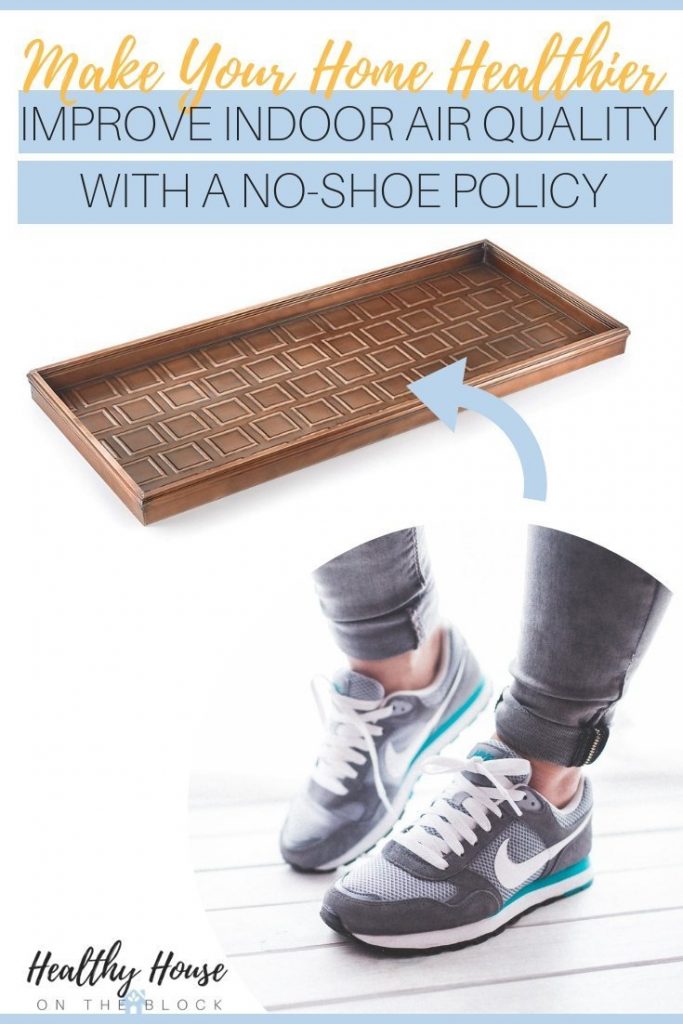
IMPLEMENT A "NO SHOE" POLICY TO KEEP UNWANTED TOXINS OUT OF YOUR HOME ALL TOGETHER.
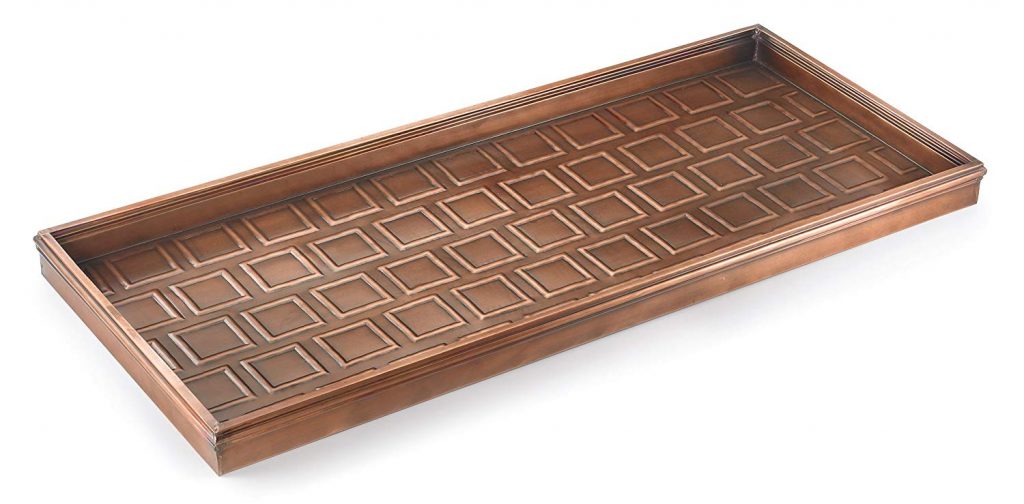
Swap Carpet Out for Low Toxin Hard Surface Flooring
One of the biggest upgrades you can make for better indoor air quality is swapping out toxic carpet for a non-toxic hard surface flooring. Traditional carpets often contain harmful chemicals like flame retardants, phthalates, and formaldehyde, which can off-gas into your indoor air for years. Carpet also acts like a sponge, trapping dust, allergens, and moisture, creating the perfect environment for mold and dust mites to thrive. By replacing carpet with a healthier alternative—such as solid hardwood, bamboo, cork, or tile—you can reduce exposure to airborne toxins and improve air circulation in your home. When choosing new flooring, look for low-VOC finishes and adhesives to further minimize indoor air pollutants. This simple home improvement idea not only enhances air quality but also creates a cleaner, healthier living space for you and your family.
This post about flooring options will help you figure out what is best for your home.
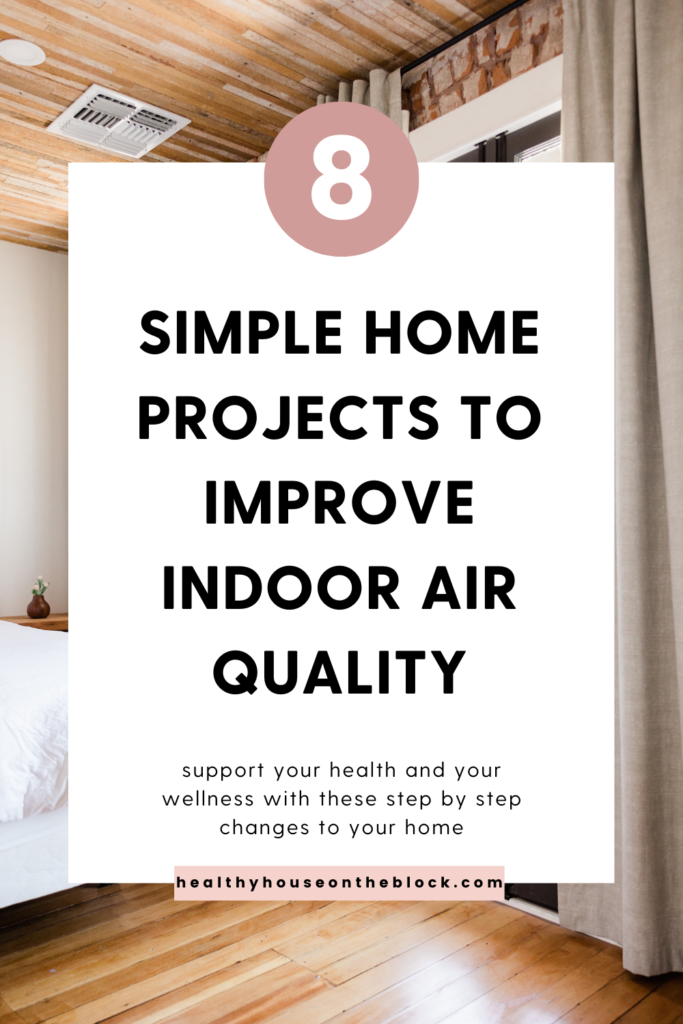
Making changes to improve your indoor air quality with these home improvement ideas is such a great way to create a healthier home—but you don’t have to figure it all out on your own! If you’re planning a home project and want some guidance on choosing the safest, toxin-free materials, I’d love to help. I offer consulting to walk you through the best options for your space, and I also have an in-depth eBook all about healthy building materials that can make the process even easier. Whether you’re doing a full renovation or just making a few small swaps, I’ve got resources to help you create a home that truly supports your health. Let’s make it happen!
Share this:
- Click to share on Facebook (Opens in new window) Facebook
- Click to share on LinkedIn (Opens in new window) LinkedIn
- Click to share on Reddit (Opens in new window) Reddit
- Click to share on Pinterest (Opens in new window) Pinterest
- Click to print (Opens in new window) Print
- Click to share on X (Opens in new window) X




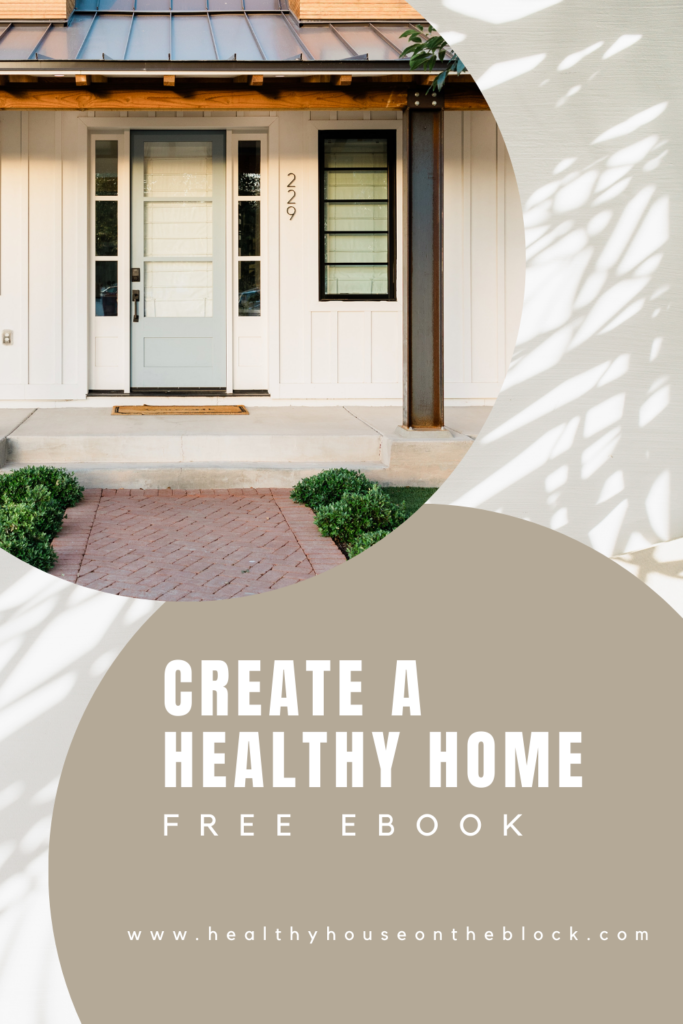



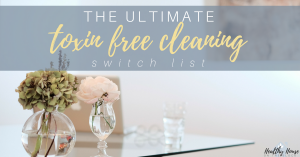

I enjoy gardening so I am definitely going to add an indoor garden box at home. Great tips! 😊
That’s a great idea! I’m going to add one to my house too 🙂
We already do a few of these, but could improve on others. My husband is good about changing out the air filters when they need it. We have quite a few indoor plants, including those that are known for improving air quality. I also have a no shoes rule in the house. We all take our shoes off in the garage before even walking into the house.
You guys have it down! Once they’re habits, you barely think about them anymore!
This is something we are trying to be more aware of. Really great tips!
I’m glad it was helpful! 🙂
Eight simple home maintenance tips are so useful! Thanks for sharing! I will keep them in mind!
You’re so welcome!
I want to get a smart thermometer so bad.. They had one in our cabin when we went on vacay and life has not been the same since haha
Ha! I think that’s what convinced us too — we were in a VRBO that had one and it was so great!
These are such useful tips! I have some friends who are always asking me what to do on their house and I am sending them this!
I’m so glad it was helpful!!
No shoe policies are so important! My husband used to balk at it but once we had our kids he finally understood why it was so important.
I think that’s when it changes for a lot of us. The correlation between our dirty shoes next to where the kids play is really eye opening. 🙂
Improving air quality in our home has recently become very important to us because our toddler has very bad environmental allergies. Thank you for these tips. We will try to do several of these things.
I’m so glad it was helpful! I hope it makes it easier on your toddler.
All great tips! I’m actually waterproofing my basement walls this summer just to prevent issues in the future
That’s a great idea! It really does make a difference.
These are some great ideas to improve/update your home. I am going to add an Indoor garden box to naturally purify the air. I think I am going to steal other ideas too from the post… 🙂
The indoor garden box is such a fun idea!
I love my no-shoe policy! It really makes a huge difference. I haven’t used a charcoal filter but I’m going to look into it!
Yes, the filter is amazing! A carbon filter is also a great alternative!
Nice tips, and very practical ones. Every one looks for clean and tidy surroundings to leave. Small improvements would make huge difference, thanks
You’re welcome! I’m glad it was helpful!
Oooo so many great home improvement ideas!!! I want a smart thermostat so bad!!!! Def on my list of things to do
They really are a useful tool!
Pingback: HVAC Filter Guide: Cleaner Air and Better Health in Your Space - homerevamping